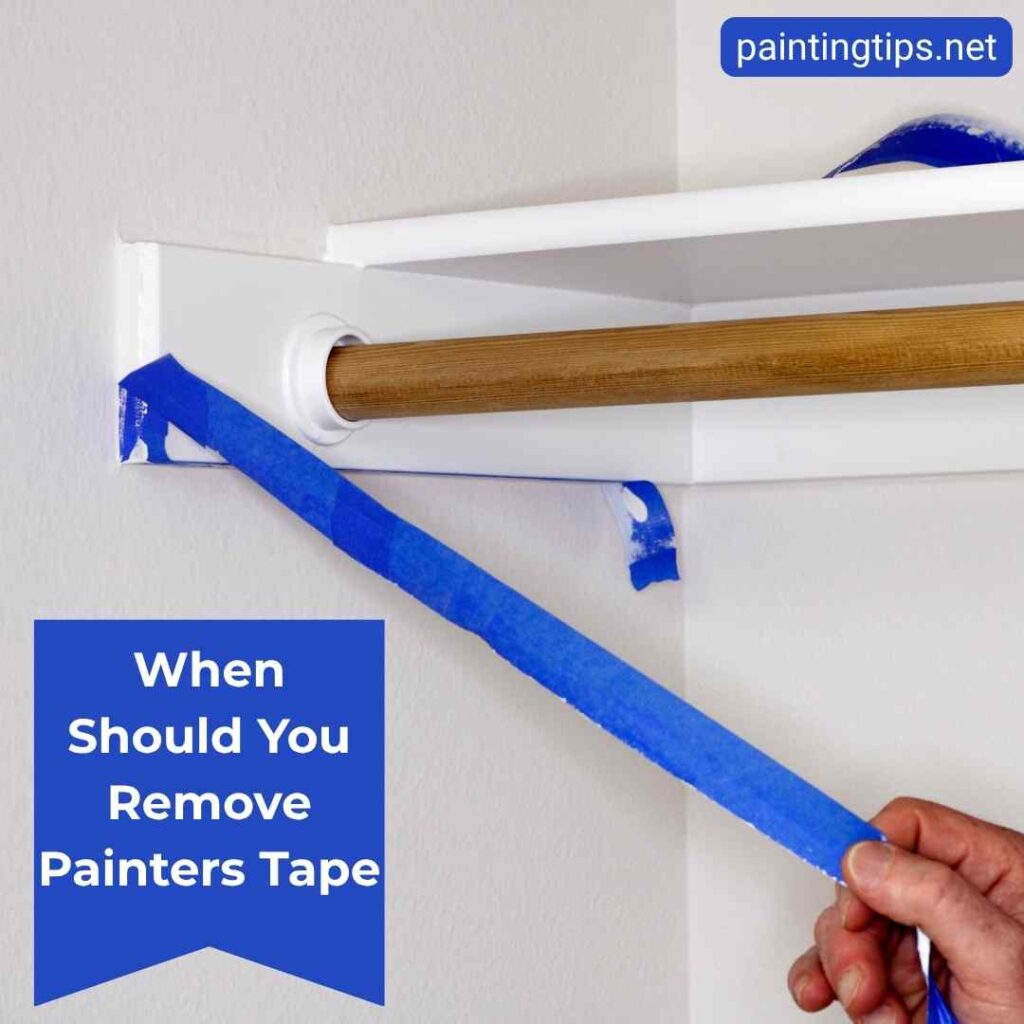Painting a room can be exciting, but achieving perfectly straight lines takes time and isn’t always easy. That’s where painter’s tape comes in. It helps prevent messy edges and touch-ups. However, the key to a flawless finish is knowing the right time to remove the tape. If you take off the masking tape too early or too late, your clean lines can be ruined. In this guide, we’ll share tips and techniques to help you understand when to remove painter’s tape and why it matters.
When to Remove Painter’s Tape

Painter’s tape helps create clean, sharp paint lines, but the key to a flawless finish is knowing when to remove it. It may seem like a small detail, but the timing of removing painter’s tape plays an important role in the painting process. If you remove the tape too early, the paint can run and you may need to clean it up. If you wait too long, the hardened paint may peel off with the tape. In that case, instead of simply pulling the tape off, you’ll need to carefully cut along the edges, which takes more time.
In general, painter’s tape should be removed after all coats of paint are finished. However, the type of paint you use also matters. If you’re working with paint thinned with water or solvent, it will be more fluid. Removing the tape immediately after painting in this case may cause drips. Waiting a little longer before removing the tape helps reduce this risk. On the other hand, if you’re using ready-to-use paint, you can remove the tape once the paint has started to dry slightly.
Another important factor is the quality and type of tape. Some painter’s tapes are designed for outdoor use, while others are intended for indoor projects. Always choose the right tape based on the surface and conditions you’re working with.
Leaving tape on the surface for too long is also undesirable. The adhesive quality is what makes the difference here. If the tape sticks too strongly and won’t peel off easily, it means the adhesive is excessive, which can cause the tape to tear when you pull it off. A good-quality painter’s tape should gradually release from the surface on its own over time. If your tape never does this, it’s worth switching to a different brand.
At the same time, tape that comes off too easily is also a problem. If the tape starts peeling before you’ve applied the final coat, it can ruin your lines and force you to reapply it to all the edges. That’s why it’s best to use high-quality painter’s tape from reputable brands to avoid these issues. “This may also interest you: Painting a room for beginners.”
Can You Leave Painter’s Tape on Too Long?
Leaving painter’s tape on too long can cause serious problems. Even with fast-drying paints, once the paint hardens on the edge of the tape, it can act like glue. This makes the tape stick too tightly to the surface. When you finally pull it off after painting, the dried paint may peel away with the tape, ruining your clean lines. For the best results, avoid leaving painter’s tape on the surface for too long.
What Happens If You Remove Painter’s Tape Too Soon?
Removing painter’s tape too early while the paint is still wet can cause the paint to run. This issue is more common with thinned paints, but it applies to all types of paint. Wet paint can easily smudge, ruin sharp lines, and require touch-ups. Since this puts your painting project at risk, we recommend not removing painter’s tape too early.
Do You Take Painter’s Tape Off Wet or Dry?
The best time to remove painter’s tape is while the paint is still slightly wet, but not fully wet or completely dry. The ideal moment is after all coats are finished and the paint has started to set but hasn’t cured completely. Removing the tape when the paint is too wet can lead to drips and smudges, while waiting until it’s fully dry increases the risk of peeling. That’s why the right time to remove painter’s tape is when the paint is just a little wet.
Should You Remove Tape After Every Coat of Paint?
No, you don’t need to remove painter’s tape between coats. Doing so would only make the painting process longer and more complicated. For projects that require multiple coats, leave the tape in place until the final coat has been applied. Removing the tape after each coat can lead to smudges, uneven edges, or even peeling paint. Instead, remove the tape after the last coat is finished, but before the paint has fully dried.
Conclusion
Using high-quality painter’s tape can make a big difference when it comes time to remove it. Be sure to press the tape down firmly before painting to prevent bleeding, and choose tapes designed for textured surfaces if needed. Avoid leaving painter’s tape on for more than 24 hours. In warm environments, where paint dries much faster, waiting too long to remove the tape can be risky. Also, don’t pull the tape straight up, as this can lift dried paint off the surface.
Many people make the mistake of leaving painter’s tape on too long or removing it at the wrong angle. Another common mistake is forgetting to take the tape off until the paint has fully dried, which increases the risk of peeling.
Knowing when to remove painter’s tape is just as important as applying it correctly. For the best results, take the tape off when the paint is slightly dry but not completely cured, and pull it away at the proper angle. With the right timing and careful technique, you can achieve crisp, flawless paint lines that look professionally done. “You may also be interested in this: How to cut in paint without tape.”